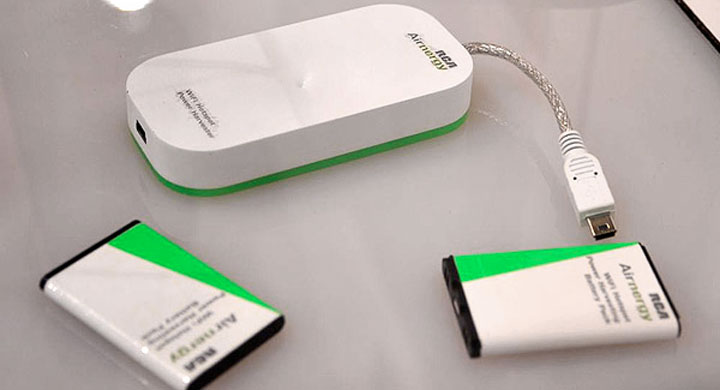The highlight of the CES so far has not been one of the latest ebook readers or 4K TVs. It has been the Airenergy charger that can harvest Wi-FI signals out of thin air and charge the batteries for us. Although, the concept of harnessing the Wi-Fi energy isn’t new, this is probably the first attempt at commercializing the whole thing as not many were able to extract enough energy out of the signals to actually power something. Using nothing but the Airenergy charger, the team was able to charge a Blackberry handset from 30% to full in just 90 minutes. It is astonishing how much power is in the air in the form of these signals. The Airenergy has a battery that can be charged anywhere where you have Wi-Fi access, and we don’t even need the password for tapping into this energy!
The rate at which it charges isn’t that fast but considering the free energy you are getting, I think its a steal. You can plug in your phone before going to sleep and have a full tank in the morning. Proximity and strength of the Wi-Fi signals are important, but you will naturally have a full battery within 2 3 hours tops. Also, since it has been successfully developed, the RCA is saying that the gadget will go for retail on the market for just 40 $ in the summer. This is a really great buy since you don’t need to have your massive power banks charged all the time with electricity or to look for a sunny spot outdoors in case of a solar powered charger. It is meant for any urban environment and could be racking up the sales shortly. Let’s see how they plan to release it. A Kickstarter campaign would be nice so we can get it cheaper!





I’m not sure how you can claim to be all about engineering and not see the fatal flaw in this concept.What this device amounts to is utilities theft. That signal comes from somewhere, it’s not magic. When you draw power off of it, you force the device generating the signal to emit power in levels it wasn’t meant to emit. At best, you reduce the amount of available wifi from the routers around you which is the equivalent of a DoS attack, at worst, you could destroy a router and possibly (though I doubt it would happen) cause a fire from drawing too much current through a circuit that rightfully wasn’t designed to handle that sort of current.
This is not a “green” technology either. Making these things has a carbon footprint as does the source that the power originates. No matter what, the use of this is theft from the utility company as that’s the origin of the power. You should print a correction on your article and don’t hide it either.